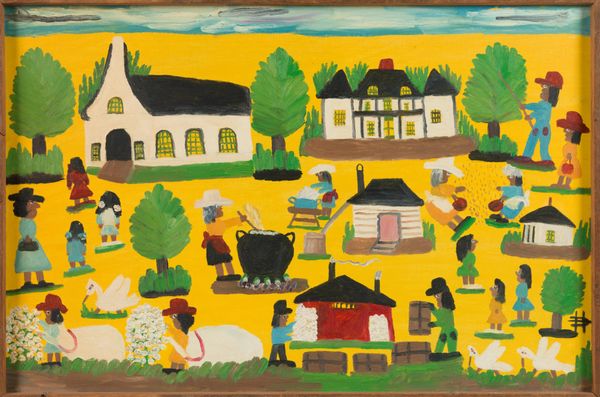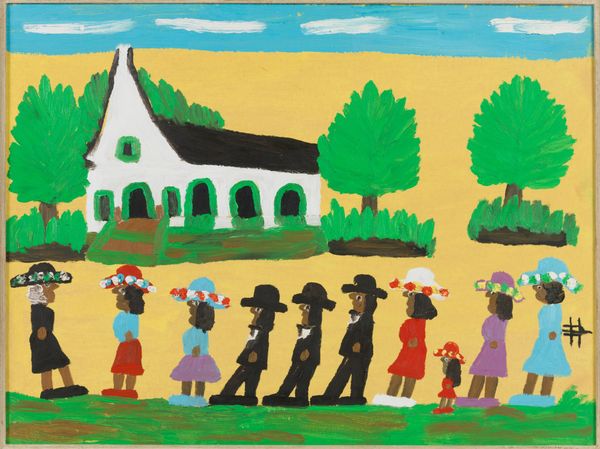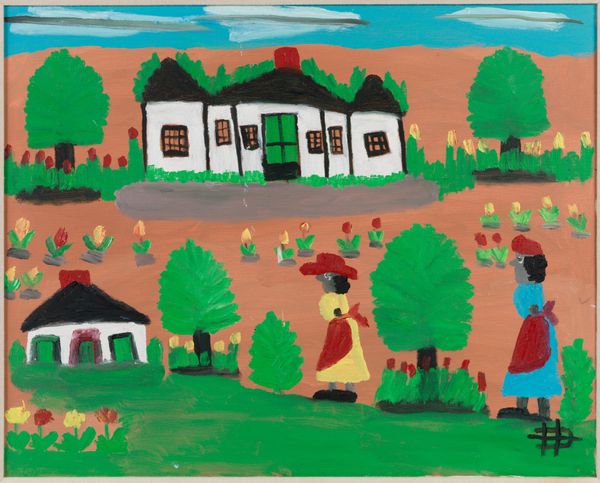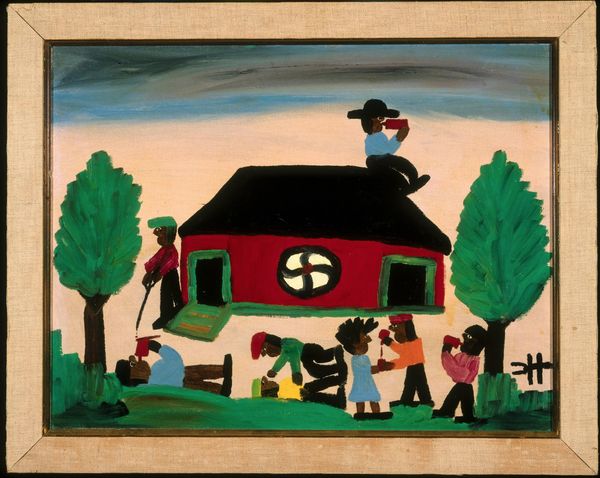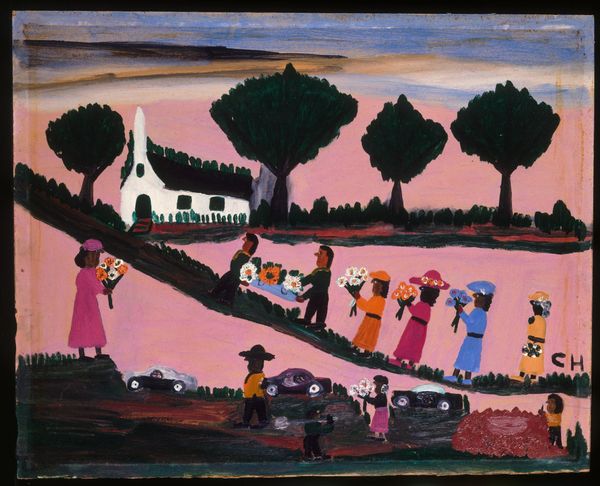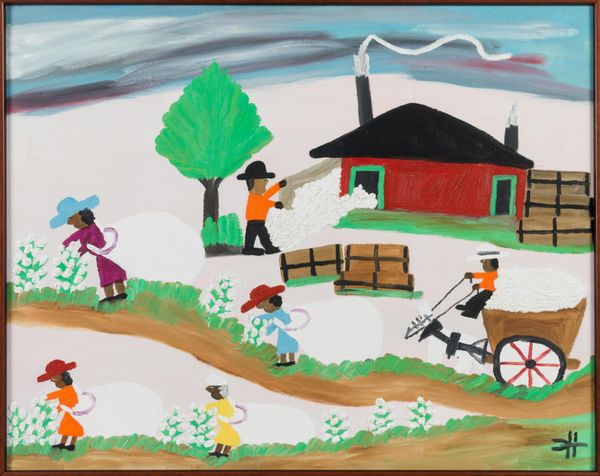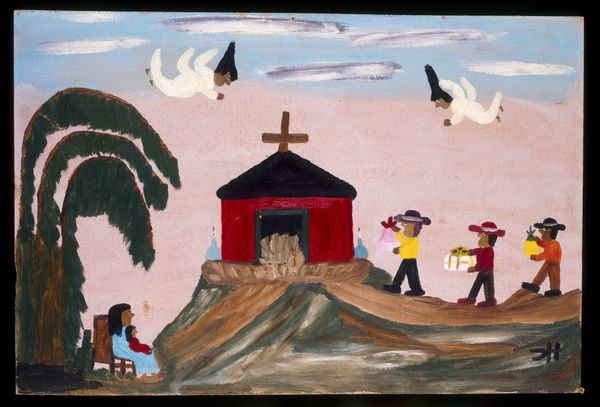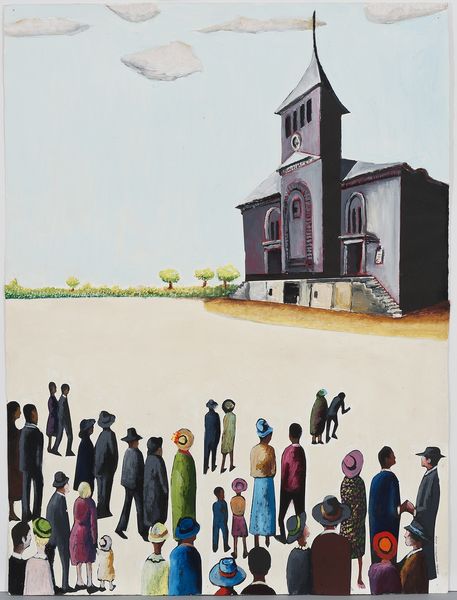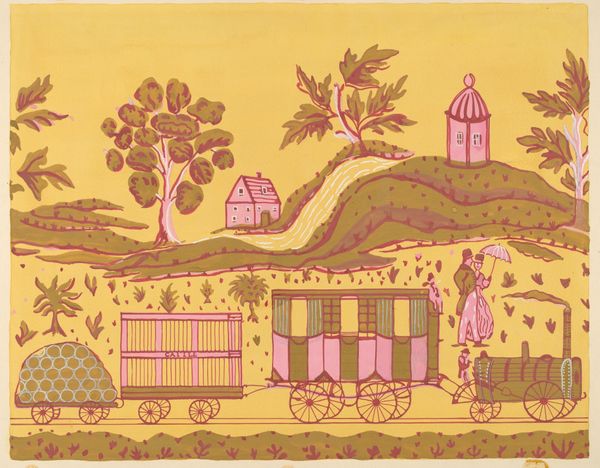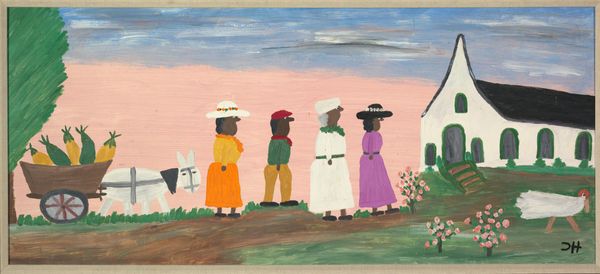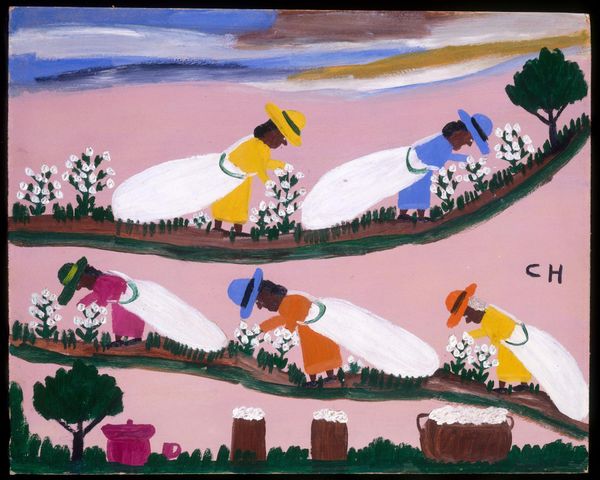
#
naturalistic theme
#
tropical
#
egg art
#
handmade artwork painting
#
oil painting
#
acrylic on canvas
#
naive art
#
modern period home
#
watercolour illustration
#
watercolor
Dimensions: 62.86 x 82.55 cm
Copyright: Clementine Hunter,Fair Use
Curator: Well, isn’t this striking. Such an emotional event, yet it's rendered with such naive charm. The upward march creates a hopeful yet solemn dynamic. Editor: Indeed. This painting is "Funeral," created by Clementine Hunter in 1969. Hunter, a self-taught artist, worked on Melrose Plantation in Louisiana, and her art offers us a vital visual record of plantation life. Curator: You can certainly sense that "record" in the raw linearity. Look at how the procession simply climbs towards the church—a basic yet powerful composition. Notice how Hunter’s almost playful use of color, the pastel pinks and blues, is set against the starker black and green. Is it meant to lessen the sense of mourning? Editor: It's precisely this blend of solemnity and vibrant color that characterizes Hunter’s distinctive folk style. Her works provide invaluable insight into the Black community's traditions in the Jim Crow South, reflecting both its hardships and enduring resilience. The positioning of the church atop the 'hill,' or highpoint in the painting, definitely emphasizes faith as a central aspect of community survival. Curator: The figures are beautifully rendered, simplified yet so full of emotion. Notice their bouquets. What is their structural contribution to the image? Are they just symbolic elements? I see their varied color as counterbalancing the white of the building in the distance. Editor: Symbolism is certainly at play, and it goes beyond pure formalism. Flowers, often associated with burial rituals, were historically sourced from the deceased’s garden, a community custom reflecting shared experiences of grief and remembrance. These communal acts served to reinforce kinship and shared heritage amid pervasive social constraints. Hunter highlights an entire history of shared experience here. Curator: The placement, that vertical rise to the church, suggests an ascending to heaven too? Editor: Absolutely. And more generally, art historians note her critical role in challenging conventional art historical narratives, demonstrating the importance of including marginalized voices in shaping our understanding of American art and culture. Her self-documentation defied power structures. Curator: Her defiance comes through. Seeing this now, the painting does not only demonstrate the funeral, but is a document, a testament. It moves me. Editor: Indeed. Her unadulterated artistic voice makes the piece profoundly memorable.
Comments
No comments
Be the first to comment and join the conversation on the ultimate creative platform.
